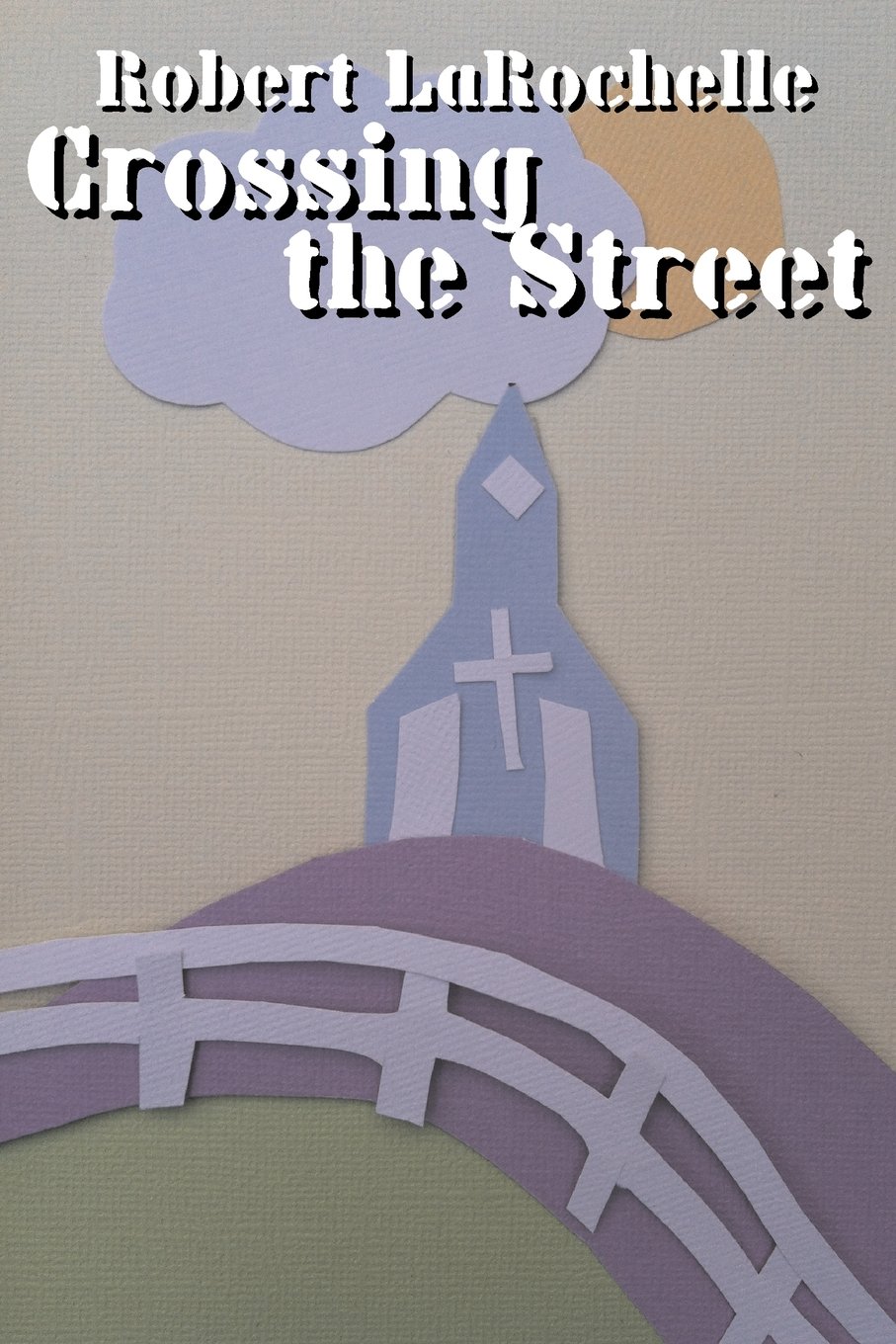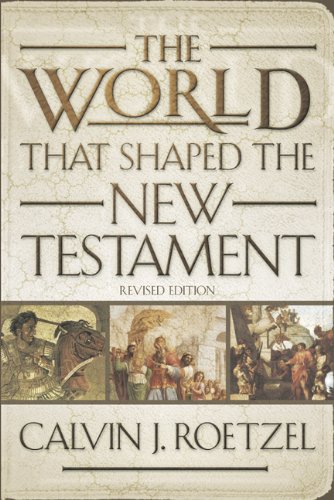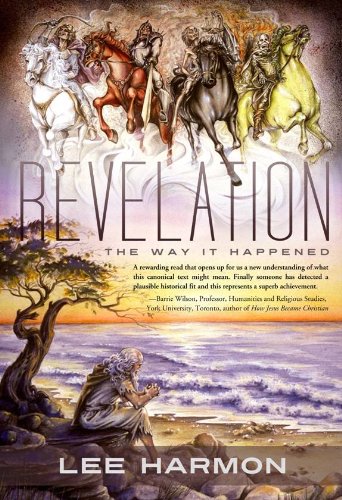Book review: Walking Toward Morning
by Victoria Safford
★★★★★
Victoria is the minister at the White Bear Unitarian Universalist Church in Mahtomedi, MN, just a few miles from where I live. I’ve only met her briefly, but we’ve communicated a bit by email, and I’ve come to appreciate her sincerity and genuineness.
This little booklet presents various reflections on life and purpose. It works great as a month-long collection of morning meditations. It’s not meant to describe UU teachings, but it gives a flavor for the sacred, while managing to avoid any particular religious paradigm—no foundation upon any single religious teacher such as Jesus.
Victoria gave me permission to simply quote an essay from her booklet. This is the one I chose, titled In Between, a particularly poignant selection for me as I just became a first-time grandpa on Sunday … and quickly picked up the phone to share my joy with my elderly mother. 
** ** **
One afternoon some time ago I brought my little baby out to visit a very, very old neighbor who was dying that year, quietly and gracefully, in her gracious home. We were having a little birthday party for her, with sherry and cake and a few old friends gathered round her bed. To free a hand to cut the cake, I put my baby down right on the bed, right up on the pillow—and there was a sudden hush in the room, for we were caught off guard, beholding.
It was a startling sight. There in the late afternoon light were two people side by side, two human merely beings. Neither one could walk, neither one could speak, not in language you could understand, both utterly dependent on the rest of us bustling around, masquerading as immortals. There they were: a plump one, apple-cheeked, a cherry tomato of a babe, smiling; and a silver-thin one, hollow-eyed, translucent, shining, smiling. We revelers were hushed because we clearly saw that these were dancers on the very edge of things. These two were closer to the threshold, the edge of the great mystery, than any of us had been for a long time or would be for a while. living, breathing, smiling they were, but each with one foot and who knows how much consciousness firmly planted on the other side, whatever that is, wherever that is, the starry darkness from whence we come and whither we will go, in time. Fresh from birth, nigh unto death, bright-eyed, they were bookends there, mirrors of each other. Radiant.
Cake in hand, and napkins, knife, glasses, a crystal carafe a century old, we paused there on the thresholds of our own momentary lives. Then, “What shall we sing?” said someone, to the silence, to the sunlight on the covers, to the stars. It was the only question, then, as now, years later. What on earth shall we sing?

Judges 21:25, A Period of Evil
In those days there was no king in Israel; everyone did what was right in his own eyes.
//With this understatement, repeated roughly four times in the book of Judges, the Bible describes a period of unruly behavior in Israel known as the time of the judges. Six times a vicious cycle repeats itself before, finally, Israel decides to appoint a king. The rebellious cycle runs like this:
- The Israelites “do evil in the sight of the Lord.” See verses 3:7, 3:12, 4:1, 6:1, 10:6, 13:1.
- God sends an army to slaughter them.
- They cry to God for mercy.
- God sends a “judge,” which pretty much means a military leader, to rescue them.
Here are the six rescuers. You may recognize some of them.
- Othniel son of Kenaz, Caleb’s younger brother
- Ehud, a left-handed man, the son of Gera the Benjamite
- Deborah, a prophetess, the wife of Lappidoth
- Gideon, son of Joash the Abiezrite
- Jephthah the Gileadite, who was known as a mighty warrior
- Samson, who probably needs no introduction
Deuteronomy 27:23, Cursed by the Law
Cursed be he that lieth with his mother in law. And all the people shall say, Amen.
//Anyone who has read much of the Old Testament knows that the Hebrew Law had grown quite large and confusing. Scholars generally divide the law into five sections, developed at five different times in history. Here are these five sections:
1. The Covenant Code, found in Exodus 21:1-23:19. See verse 24:7, where Moses reads from the “book of the covenant.”
2. The Book of the Law, as recorded in 2 Kings 22, usually called the Deuteronomic Code.
3. The Holiness Code, found in Leviticus 17-26.
4. The Priestly Code, a collection of verses scattered through Exodus, Leviticus, and Numbers.
5. Finally, the section everyone knows about: the Ten Commandments.
But what fascinates many readers is a particular collection of laws with a strange punishment, embedded within the Covenant Code. 0Commit these laws and you’ll be “cursed,” like in today’s verse. There are twelve such laws, listed between Exodus 21:15-26.
What sort of deterrent is this? What if you don’t believe in curses? Will you still feel motivated to obey the law?
Book review: Crossing the Street
by Robert LaRochelle
★★★★
If I recall correctly, I requested this book from the author, rather than it just being sent to me for review. It struck me as interesting that a Roman Catholic of 45 years, who served as Deacon within the Archdiocese of Hartford, would leave it all behind to become a minister of a Protestant church … while still affirming the validity of the Catholic Church! LaRochelle not only crossed the street to see what the neighbors were like, he took up residence there.
Why step down from the one true church? What is the difference between Catholic and Protestant, anyway? And how does it feel to be excommunicated from one’s lifetime heritage … for that is Roman Catholic canon law for LaRochelle’s situation.
He left in part because he could not uphold certain doctrines, such as the Immaculate Conception and the Assumption of Mary. He also felt uncomfortable with conservative church stances against such things as abortion and gay marriage, and even more innocuous issues like birth control and annulment. (Odd that over 90% of Roman Catholic couples practice some form on contraception in opposition to official church teachings.) He notes differences in religious philosophy, such as the Catholic reliance upon papal decisions versus the Protestant insistence that our only needed answers come from the Bible.
The book was a little dry in places, but it still held my attention well. The most powerful passages are the personal ones, telling LaRochelle’s own maverick story. The most interesting were the insights into Catholic doctrine, and how it has shifted in emphasis over the last half-century. The most meaningful are surely those that extol the positive contributions of both Protestant and Catholic traditions to the universal church. By “universal church,” LaRochelle means Christians; while he briefly encourages opening our understanding to other religions as well, that is not the focus of the book.
LaRochelle speaks of being “profoundly grateful for the gifts I have received from both my Catholic and Protestant heritages,” but he notes that crossing the street isn’t easy. Those on the Religious Right tend to label more progressive believers as possessing something less than the truth faith. Conversely, it is extremely difficult for the progressive side to be at ease with a fundamentalist position. Yet LaRochelle points us to the words of Jesus who, in a moment of prayer not long before he was killed, pleaded that those who would be his followers might “all be one.”

John 20:10-12, How many angels at the tomb? Part II of II
Then the disciples went back to their homes, but Mary stood outside the tomb crying. As she wept, she bent over to look into the tomb and saw two angels in white, seated where Jesus’ body had been, one at the head and the other at the foot.
//Yesterday, I pointed out the growing legend of angels at the tomb of Jesus. The three Synoptic Gospels portray first a man in white, then an angel in white, then two men/angels in white. In Mark and Matthew, the angel is sitting outside the tomb, on the stone door. In Luke, the two angels are inside the tomb, standing.
Will the final Gospel settle the argument?
The first thing to notice is that John sets one record straight: Luke is right. Two angels, and they’re inside the tomb, not outside. They sit (no longer stand) precisely where Jesus was laid.
In John’s Gospel, the two beings are called angels, but with a twist. Peter and John themselves, standing inside the tomb, see no angels. But they see something else, and it makes one think.
They see two white piles. A pile of linen, and a burial cloth. John takes pains to point out that they are in two separate piles. The cloth was folded up by itself, separate from the linen. Could he be subtly giving us a clue, here?
Now, Mary, peering into the darkness of the tomb after Peter and John have gone home, sees two “angels in white,” precisely where the piles of white rested.
Mark 16:5, How many angels at the tomb? Part I of II
As they entered the tomb, they saw a young man dressed in a white robe sitting on the right side, and they were alarmed.
//This verse comes from the book of Mark, our earliest gospel. All translations agree, the being is a “young man dressed in white.” There is no indication whatsoever that this young man is an angel. But the legend grows a bit as we reach Matthew, the second Gospel written:
Matthew 28:2-3, There was a violent earthquake, for an angel of the Lord came down from heaven and, going to the tomb, rolled back the stone and sat on it. His appearance was like lightning, and his clothes were white as snow.
Our young man in white has become an angel. Interesting. The third Gospel, Luke, like Matthew was also written with Mark in hand, but it elaborates in a different direction:
Luke 24:4, While they were wondering about this, suddenly two men in clothes that gleamed like lightning stood beside them.
So we’re back to men, not angels, but one man has become two. Luke may be unaware that Matthew changed the man into an angel … yet the robes they wear in Luke’s telling gleam like lightning. Regardless of whether it’s they or their robes that gleam, something is up with these guys! But why two men instead of one?
Book review: The World That Shaped the New Testament
by Calvin J. Roetzel
★★★★★
This is a great little introduction to the political and religious atmosphere of New Testament times. I read this 2002 revised edition which I picked up at a Christian campus bookstore, where it is sold as a textbook.
The political setting begins with Alexander the Great and continues on into the time of Herod the Great and his descendants. It discusses competing Jewish sects (Pharisees, Sadducees, etc.), Hellenistic philosophies (Stoicism, the Cynics, and Neopythagoreanism), early Gnosticism, and the Imperial Cult. It delves into the social and family setting in Palestine and the Diaspora, and explains the role of the Temple. It talks about modes of scriptural interpretation (such as midrash) and the influence of Philo and the rabbis. It concludes by attempting to describe (for most of us can at best only imagine) a worldview which accommodates angels, demons, and other supernatural explanations in a dualistic world, and the eschatological expectations held by the Jews. Into this atmosphere strode Jesus.
It’s short, not at all in depth, but very good as an intro to the times.

Matthew 26:65, The High Priest Rends His Clothes
Then the high priest rent his clothes, saying, He hath spoken blasphemy; what further need have we of witnesses?
//In the interrogation of Jesus, Caiaphas, the high priest, grows frustrated with Jesus’ refusal to answer his inquiries. When Jesus finally claims that Caiaphas will see him “sitting on the right hand of power and coming on the clouds of heaven,” Caiaphas rends his clothes in shock and dismay.
Here’s the interesting question: what was Caiaphas wearing? Were they his ceremonial garments? The high priest wore a sleeveless, purple robe hemmed with blue, purple and scarlet tassels shaped like pomegranates alternating with small bells. Only the high priest could don this robe, and only for very special occasions … like Passover Week. At the time of Jesus, this special robe was stored in the Antonia fortress next to the Temple, under Roman lock and key, allowed out only for the ritual celebrations.
Adding to the debate is the word that Matthew uses to refer to the garment: himation, rather than the Gospel of Mark’s more common term chiton. This switch in wording may be meant to refer directly to the ceremonial robe, which would mean that Caiaphas deliberately broke the law forbidding the tearing of holy garments. Presumably, in Matthew’s telling, this act foreshadows the destruction of the Temple 40 years later and the end of the priesthood ceremonies.
Judges 13:20, How To Get To Heaven
As the flame blazed up from the altar toward heaven, the angel of the LORD ascended in the flame.
//Readers of the Bible are familiar with many different ways to get to heaven. Jesus ascended from a mountain. John visited heaven in a vision. Enoch appears to have been stolen up by the hand of God. Elijah flew up in a chariot. Clouds appear to be common vehicles for transport to and from heaven. You can probably think of other examples.
But here’s a trick you might not know about. When the angel came to Samson’s parents telling them they would have a son, he (the angel) went back home to heaven by asking them to sacrifice a goat to God on an altar. Once the fire grew strong, he hopped into the fire and rode the flame up to heaven.
Book review: Revelation: The Way It Happened
This review is by goodreads friend and blogger Dave Hershey. Check out his blog at http://davehershey.wordpress.com/ for some interesting book reviews!
*********
I grew up in an evangelical Christian culture that is obsessed with the final book of the Bible, Revelation. People in my family and church often spoke of Revelation as the blueprint for the end-times, which are certainly going to happen soon. This fervor increased with the release of the Left Behind book series. These books popularized the “futurist” and “dispensationalist” interpretation of Revelation.
In some way, those books began my movement away from such understanding. As a teen, I found them to be poorly written fiction. When I went to seminary my New Testament professor was known for opposing the theology of the likes the Left Behind series promoted. Studying Revelation with Dr. Lowery opened my eyes to a different way of understanding Revelation, a way that was much more historically grounded, recognizing the book had to mean something to those who first read it, as well as much more challenging, in that it has a message for us today, right now, and not just about the future.
One could say that my understanding of Revelation has been moving from a futurist perspective, where the whole of it takes place in the future, towards more of a preterist perspective, where the whole of it, or at least much of it, took place in the first century.
This is the background I brought to my Goodreads’ friend Lee Harmon’s book, Revelation: The Way it Happened. Interacting with Lee on Goodreads has been fun. Lee is a liberal Christian, bringing a completely different perspective to the scripture then I am used to. Thus I was not sure what to expect from his book. To be blunt: I loved it.
Lee brings a unique view to Revelation. While scholars debate over whether Revelation was written prior to 70 AD or around 95 AD, Lee argues it was probably written in 79 AD. This is a minority view for sure. For Lee, the first half of Revelation tells a story that has already happened, centered on the Jewish War with Rome and the persecutions of Christians by Emperor Nero. Revelation can tell this story not because it is predicting it with God’s help, but because it has already happened.
Lee then sees the second half of Revelation as a prediction of the immanent end of the world complete with the return of the evil Nero leading an invasion from the east to take revenge on his enemies. But Nero will be defeated by Jesus Christ, leading an army of martyred saints delivering justice to God’s enemies. But of course, none of this happened and the world did not end, which is why Lee sees Revelation as a failed prediction. The world kept plugging along, the end did not come.
This is not a scholarly commentary, though it is clear Lee has read many scholarly commentaries. Lee places his commentary on Revelation in the context of a discussion between a father and a son. The father, Samuel, fled from Jerusalem prior to the Jewish War, and has lived in the city of Ephesus ever since. Samuel and his son, Matthew, are Jews, but have joined the fledgling Christian movement. The most interesting part of the book is their interactions, as well as flashbacks that tell the story of Simon’s other son who died during the war.
What I most found intriguing about the book is how it weaved a variety of genres together: there was the story of Samuel and Matthew, the actual text of the book of Revelation as well as Lee’s commentary notes on it. One thing my professor used to emphasize about Revelation itself was its weaving of genres as well as its movement around in time. Lee’s story has Revelation jumping around, taking the reader back in time before returning to the present and then zipping into the future. I believe even futurists would not see Revelation as linear, since chapter 12 is the story of Jesus’ birth. But my point is that the style of Lee’s book in some way mirrors the style of Revelation. At times it was not easy to follow Lee’s story and commentary with flashbacks and footnotes thrown in (I would not recommend it as an e-book). Then I realized that is kind of how Revelation is: it is not easy to follow because it jumps between the past, present and future. Lee, I’m not sure if you intended that, but I liked it.
Of course, there are a few points I would not agree with Lee on. His theology and mine are different. That said, I think this book could be a fruitful read for any student of scripture. There were times when I do wish Lee had included more references to his sources, explaining a bit more how he made a connection from a passage in Revelation to a specific interpretation. But again, a scholarly commentary this is not and Lee does include a list of sources at the end of the book for further reading. If anything, this book has made me want to explore preterism even more, so I am appreciative of that. Overall, thanks Lee for an entertaining, thought-provoking and enlightening book.


















 354 Circles
354 Circles
 603 Goodreads Friends & Fans
603 Goodreads Friends & Fans

 Hello! I'm an author, historical Jesus scholar, book reviewer, and liberal Christian, which means I appreciate and attempt to exercise the humanitarian teachings of Jesus without getting hung up on any particular supernatural or religious beliefs.
The Bible is a magnificent book that has inspired and spiritually fed generations for thousands of years, and each new century seems to bring a deeper understanding of life’s purpose. This is true of not only Christianity; through the years, our age-old religions are slowly transforming from superstitious rituals into humanitarian philosophies. In short, we are growing up, and I am thrilled to be riding the wave.
I avidly read all thought-provoking religion titles. New authors: I'd love to read and review your book!
Hello! I'm an author, historical Jesus scholar, book reviewer, and liberal Christian, which means I appreciate and attempt to exercise the humanitarian teachings of Jesus without getting hung up on any particular supernatural or religious beliefs.
The Bible is a magnificent book that has inspired and spiritually fed generations for thousands of years, and each new century seems to bring a deeper understanding of life’s purpose. This is true of not only Christianity; through the years, our age-old religions are slowly transforming from superstitious rituals into humanitarian philosophies. In short, we are growing up, and I am thrilled to be riding the wave.
I avidly read all thought-provoking religion titles. New authors: I'd love to read and review your book!
 Hi! While Lee writes the articles and reviews the books, I edit, organize, and maintain the blog. The views expressed here are Lee's but I'm his biggest supporter! :-)
Hi! While Lee writes the articles and reviews the books, I edit, organize, and maintain the blog. The views expressed here are Lee's but I'm his biggest supporter! :-)
Connect With Me!